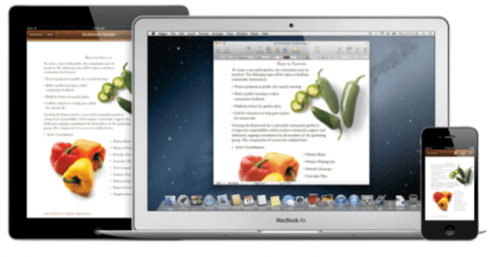
Today at its Worldwide Developers Conference in San Francisco, Apple officially launched the next version of its desktop operating system. Mac OS X Mountain Lion, which the company first previewed in February, will be available for purchase next month.
While the next iteration of any major operating system is always exciting news for the product’s most devoted users, Mountain Lion represents something much bigger for Apple and its customers: It continues the company’s slow convergence of its desktop and mobile platforms.
This trend first became obvious with the release of Lion last summer. That version of Mac OS X was the first to borrow heavily from iOS by including multitouch gestures, a desktop app store and Launchpad, an application-launching interface that mimics the iOS home screen.
Mountain Lion: Making Mac OS X More iOS-Like Than Ever
With Mountain Lion, Apple pushes the desktop experience further toward that of using the iPhone, iPad and iPod Touch. Most of its new features either port something from iOS over to Mac OS X or otherwise bridge the user experience between the desktop and Apple’s mobile platform. Notification Center, Reminders, Messages, AirPlay, Game Center, Siri dictation and Twitter integration are among the more notable examples of iOS apps and features making their debut on the desktop.
Perhaps most importantly, iCloud will be embedded deep within Mac OS X, which will allow even more wireless syncing of content and activity between mobile and the desktop.
At the WWDC today, Apple demoed how iCloud will allow syncing of everything from documents in Pages to browser tabs in Safari. The company is also doing away with the Stickies app on the Mac and replacing it with a desktop version of iOS’s Notes app. Naturally, those notes will be synced across devices, much like users of apps like Evernote have been accustomed to for years.
With AirPlay mirroring between Apple TV and Mac OS X and iOS, this interscreen convergence slowly makes its way to our televisions as well. The rumors continue to point to something much bigger in that particular space later this year, but Apple is wasting no time making our TVs work more like their own gadgets.
Cross-Device Convergence: A Computing Trend Beyond Apple
Apple isn’t the only tech giant to recognize the need to create a more consistent experience between desktops, tablets and smartphones. Google has a more limited presence on desktops outside of Chrome, but the last official release of Android aimed to make the experience more consistent across tablets and smartphones running the OS. Perhaps even more significantly, given Microsoft’s market share, Windows 8 is built around this very concept and borrows heavily from the interface found on Windows Phone devices.
For users, all of this means a much more seamless experience for those who work and play across multiple devices. The importance of that convergence can hardly be overstated. As our personal devices, apps and data proliferate, our lives become more flooded with digital noise and experiences fractured across multiple pieces of hardware. There’s no reason for these experiences to not be at least somewhat consistent.
Why iOS-ifying Mac OS X Makes Total Sense
From Apple’s standpoint, this slow convergence makes total sense. For one, it provides a better user experience, something Apple is generally obsessive about trying to achieve. It also capitalizes on the strengths of perhaps its most important product. iPads and iPhones now make up nearly 75% of the company’s massive revenue, and that number keeps growing.
Laptops are now a minor part of its business but still very important, since tablets are nowhere near replacing more powerful machines like the MacBook Air and – especially for photographers, video editors and other creative professionals – the MacBook Pro.
It’s hard to imagine Final Cut Pro running smoothly and fully featured on an iPad anytime soon. Yet in the meantime, it makes sense for Apple to slowly begin the transformation of Mac OS X into something that works and looks a lot more like its most successful platform of all.










